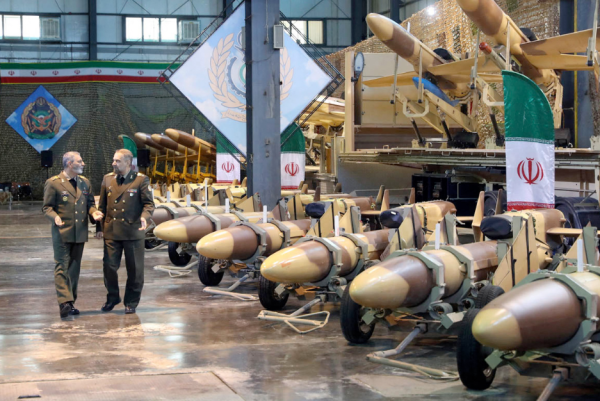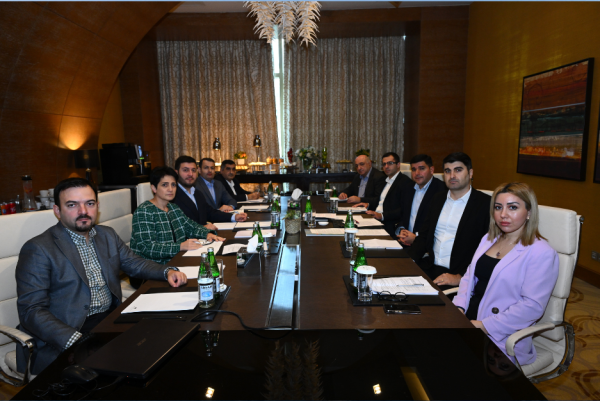Four villages at the heart of new Armenia-Azerbaijan tensions
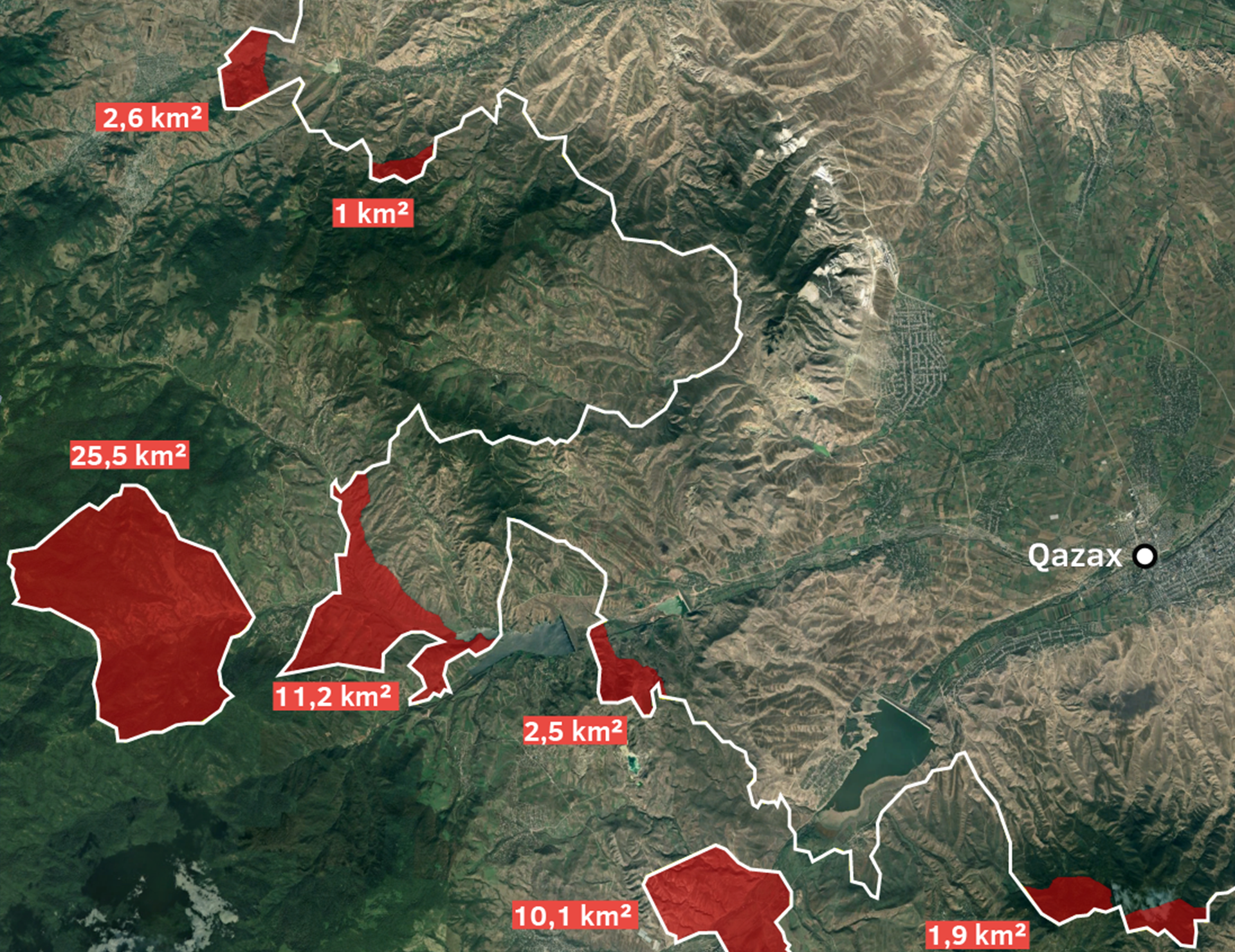
Following the reestablishment of Azerbaijani control over its southwestern Karabakh region partially in 2020 and fully in 2023, the primary focus of the Armenian-Azerbaijani conflict has transitioned to other unresolved matters, including the delineation of the state border and several Azerbaijani villages under the Armenian control. Since the First Karabakh War (1988 – 1994), the border has evolved into a line of contact, with each side controlling portions of the other’s territory. This is mostly limited to certain heights and fields in most regions, as well as the enclaves of the countries that are under the control of their surrounding state.
However, one specific segment of the border has been a hot topic of discussion in recent weeks. This area consists of four villages in the north-western Qazax Province of Azerbaijan, namely Bağanıs Ayrım, Aşağı Əskipara, Xeyrımlı, and Qızılhacılı. Being under Armenian control for over three decades, this is the sole section of the border where one side controls settlements on the other’s mainland. Today, the villages are uninhabited and lay in ruins. The original residents were displaced, and in some cases, killed.
Map 1. Locations of the four mainland villages of Qazax Province under Armenian control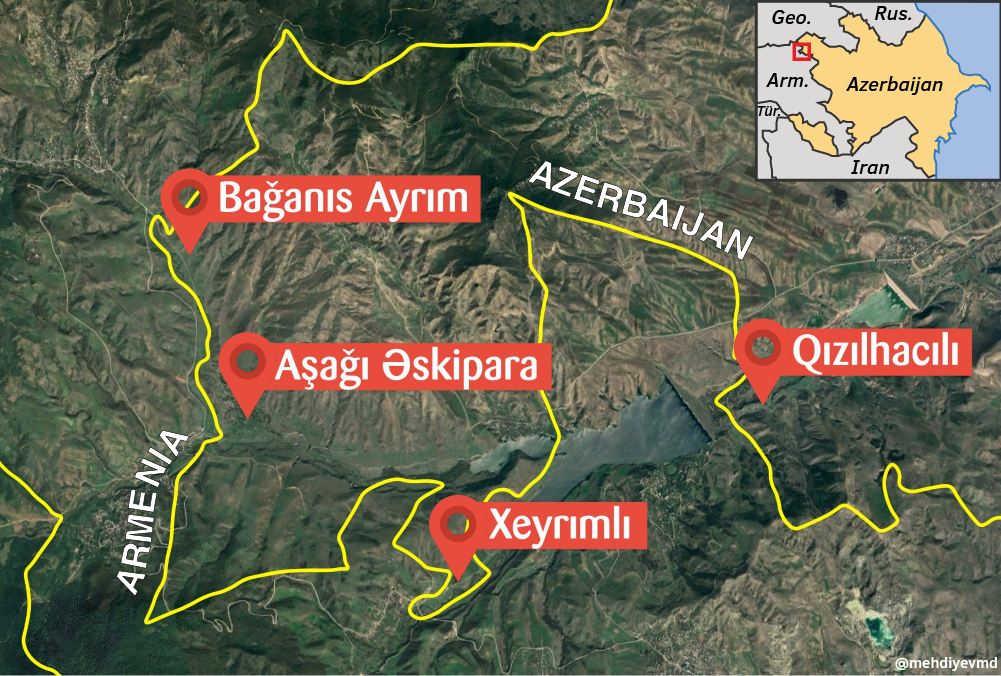
History
During the initial stages of the Armenian-Azerbaijani conflict in the late 1980s, Qazax was among the first border areas to experience tension outside of Karabakh. The unique border situation in Qazax, where Armenian and Azerbaijani villages were adjacent along the border, and the fact that a key Armenian road passed through some of these villages, contributed to the escalating tensions.
The first significant incident on this front occurred in March 1990 in the village of Bağanıs Ayrım. Positioned along one of the roads linking Armenia to Georgia, as well as the main road connecting several important villages in Armenia’s north-eastern Tavush region, Bağanıs Ayrım was perceived as a potential threat by Armenians in the neighbouring villages. Consequently, an armed assault was launched on the village on 4 March, resulting in two fatalities and two injuries.
On 24 March 1990, twenty days later, a group from Armenia, armed with automatic weapons, entered Bağanıs Ayrım, resulting in the deaths of 8 Azerbaijani villagers. Among the casualties, five individuals were reportedly burned alive. Thirteen residences were destroyed and looted. Despite these actions, the group was unable to establish control over the village due to the resistance of Soviet soldiers present in the area. By 1992, the four villages, in addition to three exclave villages of Qazax, had come under Armenian control.
Modern-day
This part of the border continued to be one of the most volatile areas following the end of the First Karabakh War. Today, Armenia controls 56,5 km² of Azerbaijan's territory in the Qazax Province.
Map 2. Areas of the Qazax Province in Azerbaijan under control of Armenia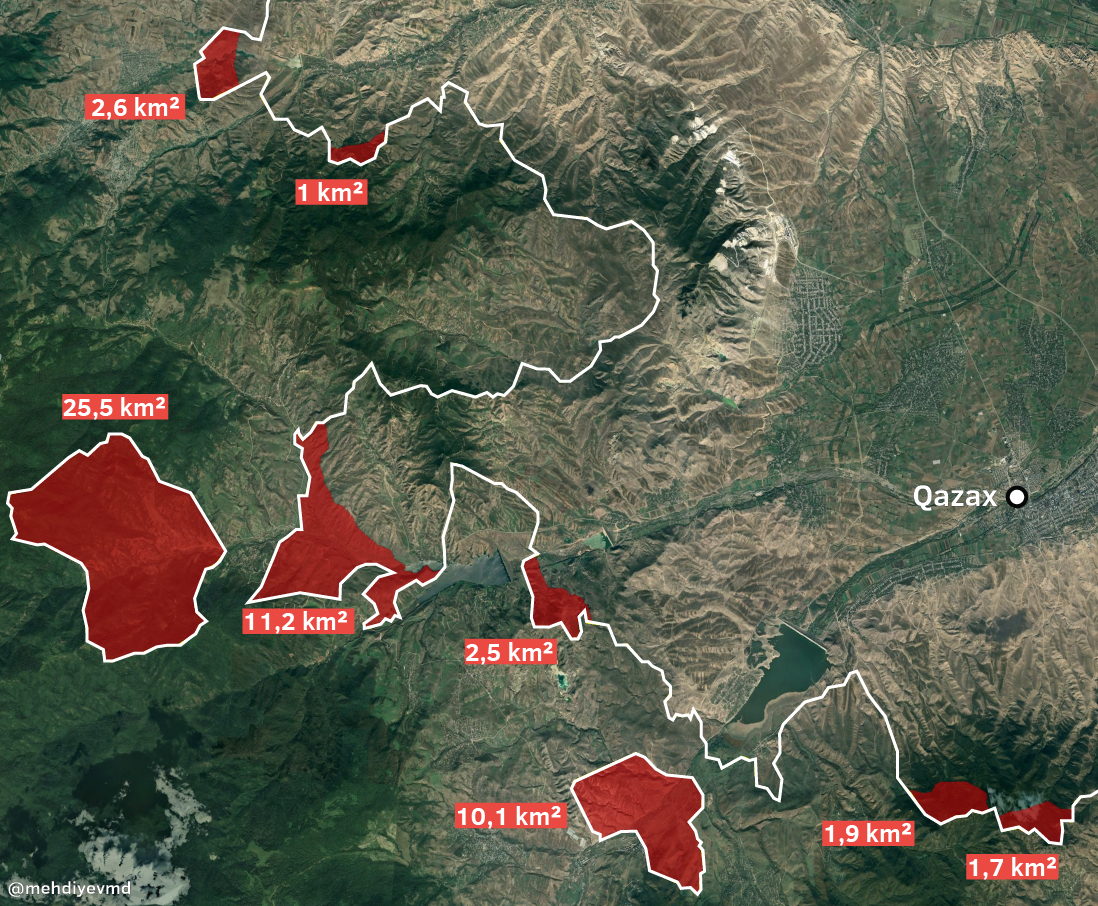
Following the conclusion of the Second Karabakh War in 2020, Russia mediated a ceasefire agreement between Armenia and Azerbaijan. In the initial version of the treaty disseminated by Russian media, it was stipulated that Armenia would return control of the territory it held in the Qazax province back to Azerbaijan. Nonetheless, when the official version of the agreement was published by the Kremlin a few hours later, there were no mentions of the Qazax province. Azerbaijani media later clarified that this omission was due to a verbal agreement reached between the two sides, which they chose not to include in the written treaty.
The issue of the occupied villages of Qazax first gained attention in Armenia in May 2021, when Mikayel Minasyan, the son-in-law of former Armenian president Serzh Sargsyan, claimed on social media that Pashinyan was planning to return the eight villages (including the enclaves) under Armenian control back to Azerbaijan. Minasyan’s claim incited outrage and led to a two-day protest in Yerevan, the capital of Armenia. However, the issue was soon forgotten. It gained prominence again in October 2023 when the Azerbaijani President Ilham Aliyev brought it up during a phone call with the President of the European Council, Charles Michel. Aliyev stated that the “eight villages [four villages in mainland + four villages in exclaves] of Azerbaijan were still under Armenian occupation and stressed the importance of liberating these villages from occupation.” Aliyev brought up the issue again during an interview with local media in January 2024, saying “Those villages [under Armenian control] that are not enclave villages, those four villages [of Qazax] should be unconditionally returned to Azerbaijan. Those villages that are enclave villages - because an enclave village of Armenia is in the territory of Azerbaijan - a separate expert group should be created and discussed in relation to those villages. We believe that all enclaves should be returned.”
Three days after the seventh meeting of the two border commissions at the Qazax border on 10 March 2024, Azerbaijan’s Deputy Prime Minister, Shahin Mustafayev, called for Armenia to immediately withdraw from the four non-enclave villages in the Qazax Province. Two days later, Armenian Prime Minister Nikol Pashinyan held a live press conference, displaying a cutout map of Armenia to illustrate its de jure border. He explained to the local audience that the villages demanded by Azerbaijan are not within Armenian territory, stating that “villages with such names [...] have never existed within the territory of Armenia, neither in Soviet nor post-Soviet times.”
On 18 March, Pashinyan visited Voskepar, a village situated between the Armenian-occupied Aşağı Əskipara village in mainland Qazax and the enclave of Yuxarı Əskipara. During his visit, he interacted with the local inhabitants of Voskepar and the adjacent villages of Berkaber and Kirants, telling them that “it is logical that we start the demarcation and delimitation process in the area from Baghanis to Berkaber”, an area also encompassing the four villages of Qazax under Armenian control. Furthermore, he stated that “Our issue today with a number of countries in the region is that we want them to recognize the territorial integrity of Armenia according to an agreement. But if we want others to recognize [it], first we must recognize it ourselves.” In a meeting with his party members on 31 March, Pashinyan expressed that “the authorities of Armenia are insulted a lot because of their peace aspirations and agenda.” Additionally, he addressed false information spread by opposition media about Armenia giving up four villages in the Tavush Province by repeating that “the villages named Kyzyl Hajili [Qızılhacılı], Kheirimli [Xeyrımlı], Ashagha Askipara [Aşağı Əskipara], Baghanis Ayrum [Bağanıs Ayrım] have never existed in the Republic of Armenia” and that Yerevan has no ambitions on the territories of these villages.
Pashinyan’s apparent readiness to return the four non-enclave villages of Azerbaijan has sparked opposition within Armenia. Opposition member Anna Grigorian told RFE/RL’s Armenian Service that “He [Pashinyan] is giving the enemy our best defensive positions, the main highway and pipeline running from Yerevan to the Georgian border and so on.”
Former Armenian defence minister and leader of the “Hayastan” opposition group, Seyran Ohanyan, urged Armenian soldiers to defy Nikol Pashinyan and not to vacate the occupied areas. According to Ohanyan, “people involved in this process must be held accountable,” and “in the army itself there are intelligent people who can reject this illegal process.” He further added, “What I’m saying is not to give up that defense but to reject illegal orders”.
Armenian residents of Voskepar also voiced opposition to the return of villages in an interview with RFE/RL’s Armenian service. One resident expressed that “if we surrender their [Azerbaijan's] so-called villages today, they will demand four others tomorrow and then lay claim to our villages.”
A frequently cited reason for opposition to the return of the villages among Armenian media and opposition members is the fact that a segment of the M16 highway, which connects the eastern parts of the Tavush region with Georgia, passes through the de jure territory of the non-enclave villages. A recently propagated misconception is that this highway is the primary route connecting Armenia and Georgia. In reality, this road is one among several that link the two countries and is not the most commonly used route for transportation between them. Pashinyan addressed this issue in his press conference on 10 March, where he suggested that Armenia should reconstruct its infrastructure in the near future to ensure that it solely passes through Armenian territory.
Map 3. Main highways connecting Armenia and Georgia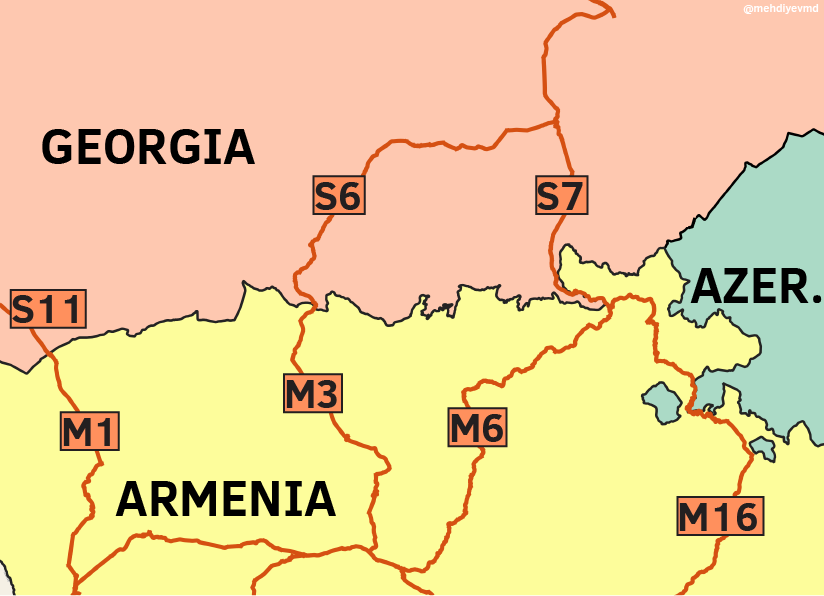
Conclusion
The territorial dispute concerning the four adjacent villages in the Qazax Province has been a persistent and complex issue. With the resolution of the Karabakh conflict, both nations are now shifting their focus towards addressing a multitude of other unresolved issues that continue to hinder the peace process. Among these, the matter of the non-enclave villages is considered one of the less complicated issues, compared to others such as the enclaves.
Armenian Prime Minister, Nikol Pashinyan, has expressed a willingness to return these villages to Azerbaijan, providing clear explanations to the Armenian public that these areas do not fall within Armenian territory. However, this decision has ignited opposition within Armenia, with critics arguing that it would entail surrendering key defensive positions and potentially pave the way for further territorial demands from Azerbaijan. Despite facing opposition, Pashinyan has stood firm on his stance, underscoring the importance of acknowledging Armenia’s territorial integrity.
The situation continues to be complex and fluid, with the potential for further escalation. Azerbaijan remains steadfast in its demands to reclaim its villages, with the intention of resettling the internally displaced villagers. If the issue remains unresolved for a longer period, it could potentially lead to some form of military escalation in the area. However, given Pashinyan’s apparent readiness to return the villages, it seems more likely that they will be returned to Azerbaijan in the near future.




